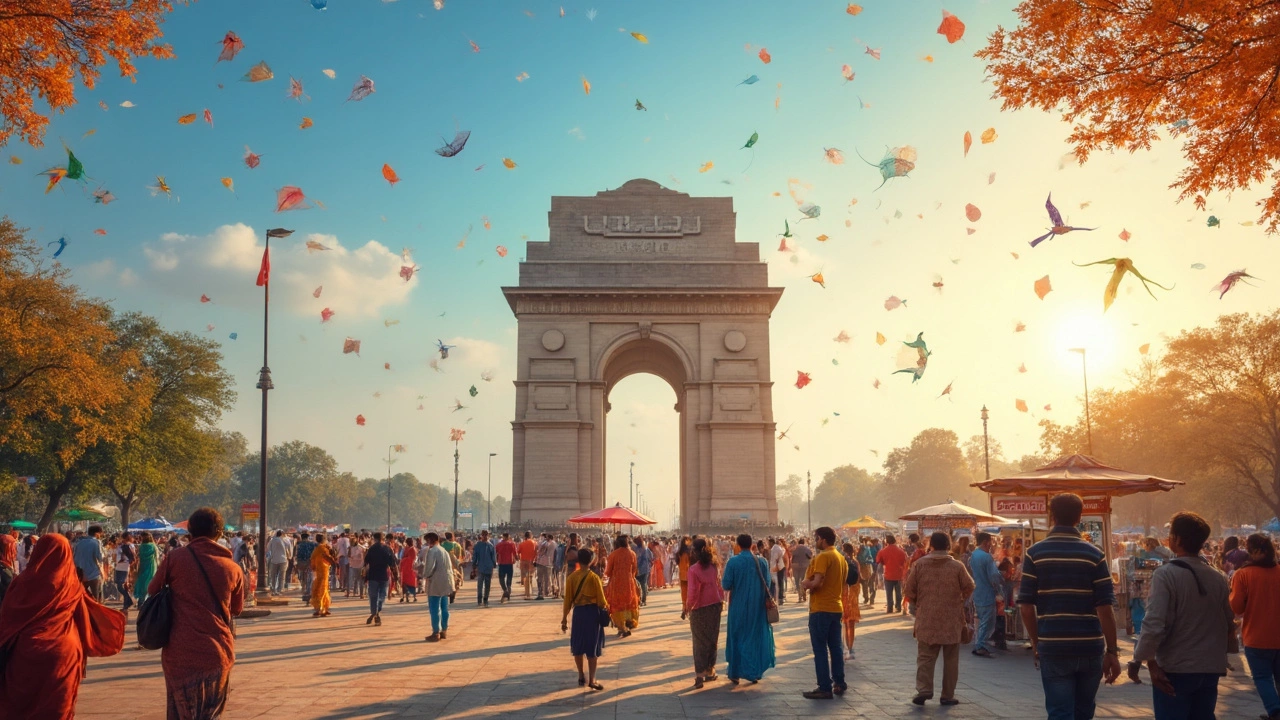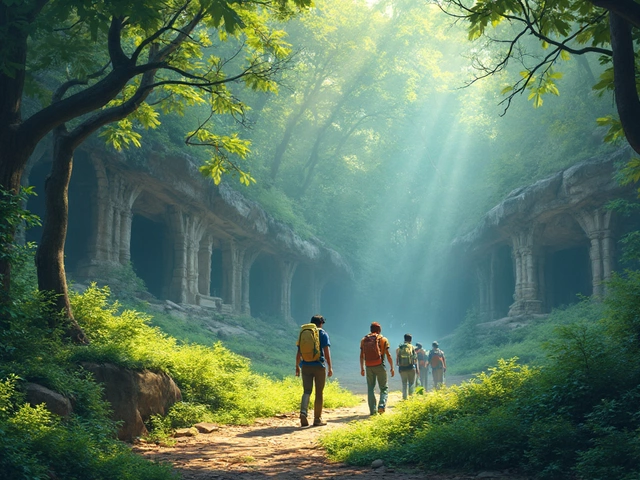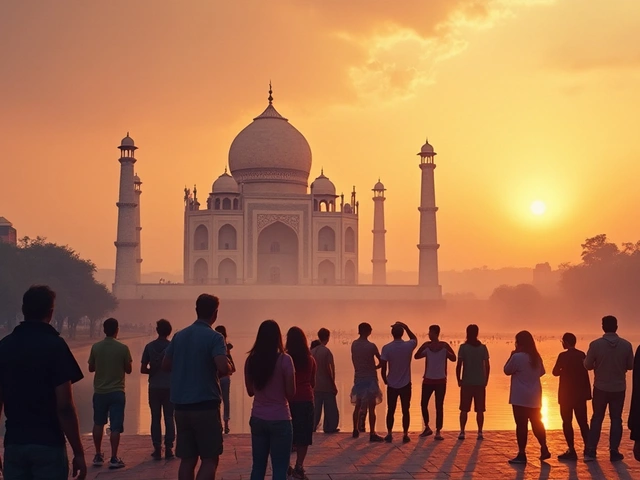The Golden Triangle packs more wow-factor per mile than just about anywhere in India. That famous trio—Delhi, Agra, and Jaipur—sits at the top of tons of travel wishlists, but timing your visit is way more important than most people think. If you pick the wrong month, you might get stuck sweating it out in crazy heat or hiding from heavy rains.
Most travelers want that sweet spot where the weather is decent, the crowds aren’t wild, and you still get the vibe of local life. The thing is, the best month for your Golden Triangle trip isn’t a simple answer, since it depends on what you want to get out of your adventure. March, for example, gives you colorful festivals and bearable temperatures, while January hits that cool and comfy note for sightseeing but can pack in the tourists.
If you’re looking to avoid sticky shirts, overpriced hotels, or endless selfie crowds, knowing how the seasons play out is key. We’ll dig into each month, call out the best and worst parts, and throw in tips to make sure you get the most bang for your buck. Plus, I’ll share real details like what’s open, what’s packed, and when you might score a bargain.
- Golden Triangle Basics: What's the Big Deal?
- Season Breakdown: Month-by-Month Clarity
- Standout Events and Festivals
- Saving Money and Beating the Crowds
- Quick Tips for a Smooth Trip
Golden Triangle Basics: What's the Big Deal?
When people talk about traveling in North India tourism, the Golden Triangle comes up fast. It’s a classic route that hits three seriously famous cities—Delhi, Agra, and Jaipur—each about four to six hours apart by road or train. You get a taste of India’s big city buzz, epic forts, and picture-perfect palaces, all packed into a trip that’s easy to manage, even if you’re short on time.
Here’s how each spot turns up the heat:
- Delhi: The capital slams old and new side by side. Explore Red Fort, Humayun’s Tomb, or chow down on crazy street food in Chandni Chowk before hitting modern shopping scenes in Connaught Place.
- Agra: You come here for the Taj Mahal. It’s on pretty much every top 10 wonders list and really does blow you away in person. But Agra isn’t one-trick—Agra Fort and Fatehpur Sikri tell big stories too.
- Jaipur: The Pink City’s all palaces, bazaars, and wild forts. Amber Fort, Hawa Mahal, and the local markets are full of personality. Jaipur’s where you’ll spot camels, chaos, and color around every corner.
Why do most travelers pick this circuit? Easy. It checks off loads of bucket-list spots, gives you a crash course in Indian history, and you don’t have to worry about wonky transport between cities. Seriously—over 40% of first-time travelers to India do the Golden Triangle.
If you’re big on convenience, there are loads of guided tours, both budget and high-end. If you want to DIY, trains, buses, and private drivers are easy to book, especially in peak months. And the range of places to stay goes from hostels up to luxury hotels (some with killer breakfast spreads).
| City | Main Attraction | Must-Eat |
|---|---|---|
| Delhi | Red Fort | Chole Bhature |
| Agra | Taj Mahal | Petha |
| Jaipur | Amber Fort | Dal Baati Churma |
So, if you want big history, food and culture—all in one holiday—the Golden Triangle’s the smart bet. But when you go is just as important. Weather, crowds, and local events can totally change the vibe of your whole trip. Let’s break down the best time to visit next.
Season Breakdown: Month-by-Month Clarity
Picking the best time to visit the Golden Triangle isn’t just about dodging rain or heat—each month gives a slightly different vibe and travel experience. Here’s what you can really expect throughout the year if you want your India travel to be painless.
October to March: This is the sweet spot for comfort. Daytime temps stay anywhere from 15°C to 25°C (59°F to 77°F), and you won’t be melting by lunchtime. These months are dry, which means clear skies for your Taj Mahal snaps. January can get chilly, especially early mornings in Delhi, with occasional fog. If you’re into festivals, February and March offer classics like Holi—just be ready for slightly bigger crowds and hotels that fill up quick.
| Month | Avg. High (°C) | Avg. Low (°C) | Rain | Crowds |
|---|---|---|---|---|
| October | 31 | 18 | Low | Moderate |
| November | 28 | 13 | Low | Rising |
| December | 23 | 8 | Very Low | High |
| January | 20 | 7 | Very Low | Very High |
| February | 24 | 10 | Low | High |
| March | 30 | 15 | Low | Moderate |
April to June: Get ready for serious heat. Temperatures in Delhi and Jaipur regularly hit 40°C (104°F). Most people avoid the Golden Triangle during these months unless they really love empty tourist sites or know how to deal with intense sun. Drinks and AC are your best friends if you’re stubborn enough to visit.
July to September: Here comes the monsoon. You’ll catch lower prices at hotels, fewer crowds, and lush gardens. But the rain gets unpredictable. Some days are soaked; others are just humid. The upside? Cleaner air in the cities. Not everyone likes touring wet forts and monuments, so it’s a bit of a gamble, but it can pay off if you don’t mind the occasional shower.
- For most travelers, November and February are top picks for comfort and fun.
- If festival colors are your thing, March is wild with Holi celebrations.
- Monsoon discounts are real—just bring quick-dry clothes.
In short: the best time to visit the Golden Triangle really lands between October and March. If avoiding crowds is top of your list, hit late October or early March, right before or after peak season madness.
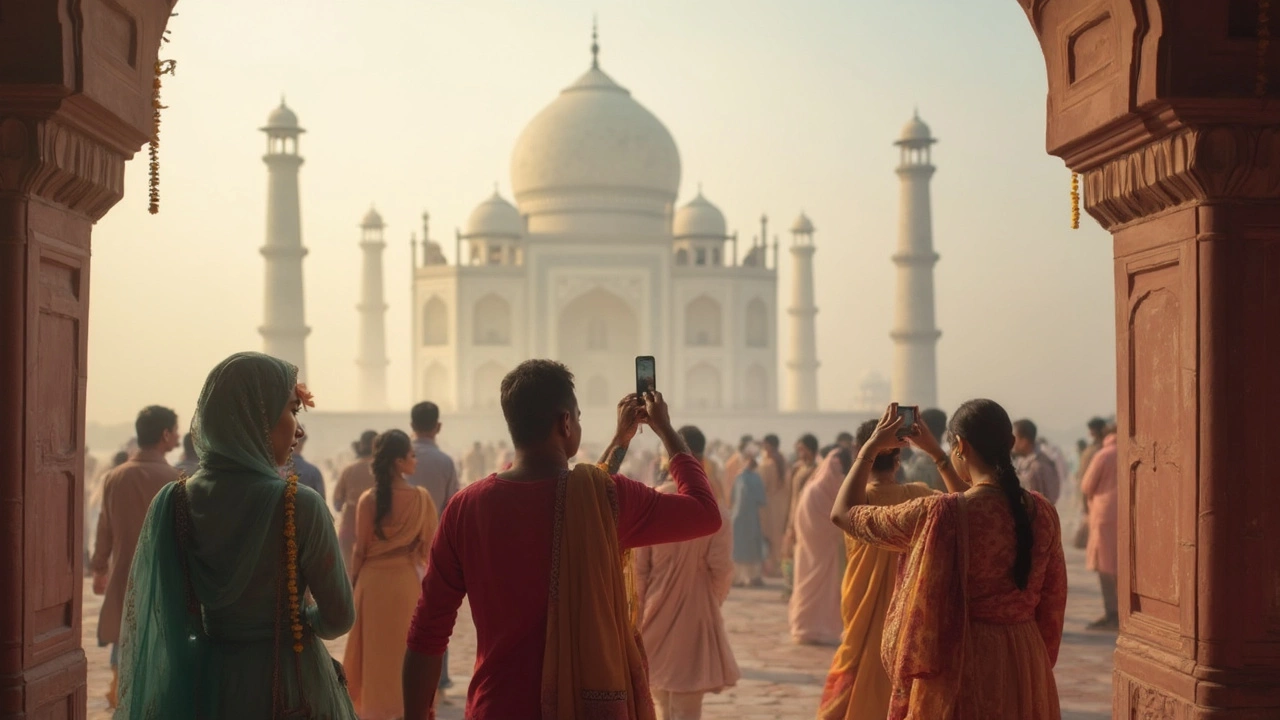
Standout Events and Festivals
If you want your Golden Triangle trip to hit just right, line it up with some of North India’s most memorable festivals. Trust me, these aren’t just extra entertainment—they change the whole vibe everywhere from Delhi’s crazy streets to the magical Taj Mahal in Agra and the pink-walled wonders of Jaipur.
One of the biggest names is Holi, the festival of colors. It's wild, friendly chaos—everyone is tossing neon powders and dancing in the street. Holi usually falls in March, and it’s one of those things you’ll never forget. Local travel blogger Rahul Jha says,
"Holi in Delhi and Jaipur isn’t just a party, it’s a full-blown explosion of joy. Don’t wear your favorite clothes!"
Diwali is another huge one. The festival of lights often lands in October or November. People decorate everything with lamps and candles, fireworks burst everywhere, and homes glow into the night. Seeing the old city in Jaipur shining during Diwali is something every traveler talks about later.
On the more local side, you’ve got the Teej Festival in Jaipur (July–August). This one is big for women, who dress up, sing, and dance through the streets. Monsoon season isn’t for everyone, but the color and energy are off the charts. If you visit Agra in February, the Taj Mahotsav is a real draw—the festival runs for 10 days with music, crafts, street food, and events right by the Taj itself.
Here’s a clear breakdown for a few of the biggest festivals in the Golden Triangle:
| Festival | Where | Month |
|---|---|---|
| Holi | Delhi, Jaipur, Agra | March |
| Diwali | Jaipur, Delhi | October/November |
| Taj Mahotsav | Agra | February |
| Teej | Jaipur | July/August |
Keep in mind: festival time can mean more tourists, higher hotel prices, and busy sights. But if you’re after unique local energy, this is when you’ll find it. Some spots fill up fast during these months, so book your place early if you want to experience the best of India travel in the Golden Triangle area.
Saving Money and Beating the Crowds
If you want to actually enjoy the Golden Triangle without blowing your budget or fighting for photo spots, you need a plan. Let’s get down to it: the worst crowds in Delhi, Agra, and Jaipur show up from late December through January. That’s because the weather is cool and every tourist group seems to show up at once. Prices for hotels easily jump 30-50% compared to slow months.
If you want better deals, target February, March, or early April. These months see temperatures start to rise, but the major rush has faded. Hotel rates drop, you’ll spot more discounts, and popular sites like the Taj Mahal or Amber Fort are way less jam-packed. Agra especially feels quieter midweek in March. Trains and flights between the cities tend to be cheaper too, especially if you book a month in advance.
Here’s how you keep costs in check and skip the tourist stampede:
- Travel in the shoulder season (February, early March, late September). You’ll dodge the worst heat and crowds, and snag deals.
- Book hotels and tours online well ahead. Sites like MakeMyTrip or Booking.com often show lower prices than what you’ll get walking in.
- Visit main attractions right when they open. For example, the Taj Mahal gates open at sunrise, and if you get there early, you’ll avoid both bus tours and the midday heat.
- Skip weekends for sightseeing – local families add to the crowds, especially in Delhi and Jaipur.
- Eat at local diners or dhabas. Besides saving you rupees, it’s often tastier (and less crowded) than touristy restaurants near big monuments.
Just so you see the pattern, here’s a quick look at average hotel rates for a 3-star hotel in Agra by month:
| Month | Average Rate per Night (INR) |
|---|---|
| January | 4000 |
| March | 2800 |
| June | 2200 |
| September | 2400 |
Notice that low and shoulder months offer serious savings. Add in fewer people, cooler mornings, and shorter entry lines, and you’ve got a recipe for a chill trip around North India’s hot spots. Planning this way means more money left for extra sightseeing or even that extra night in Jaipur.
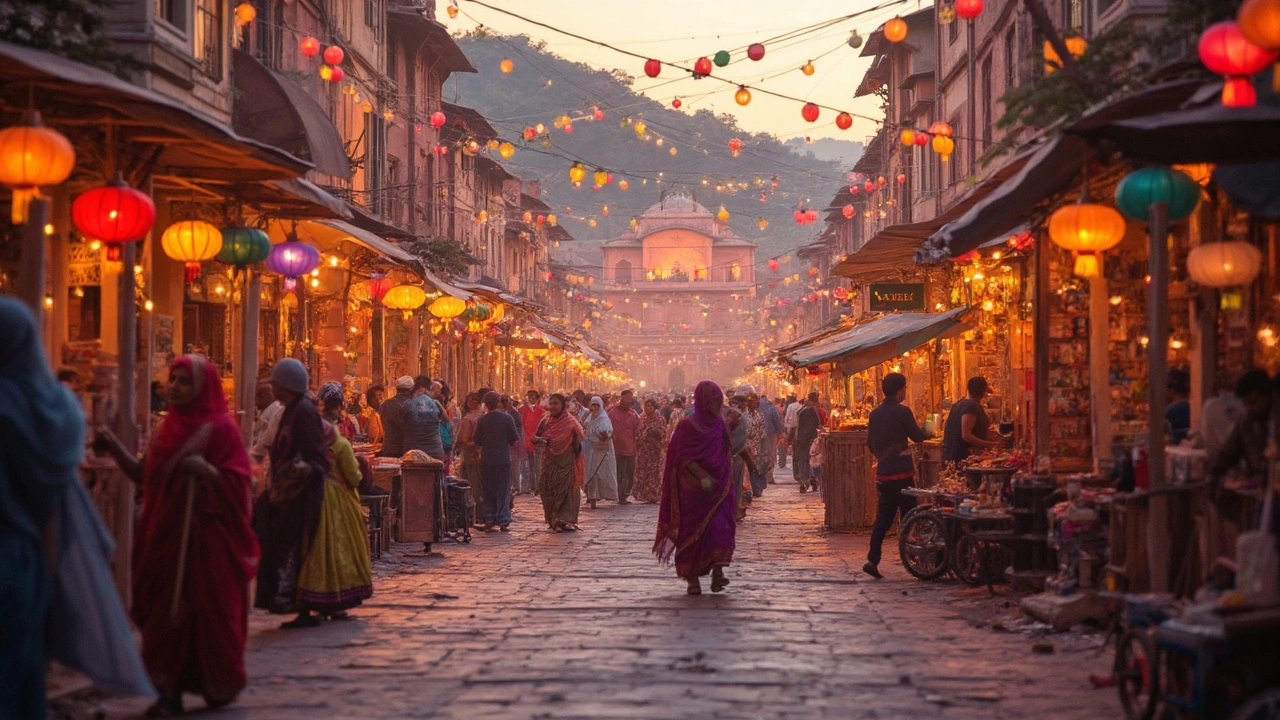
Quick Tips for a Smooth Trip
Making your Golden Triangle trip stress-free is all about being a bit practical. From packing to local tricks, here’s what makes a real difference.
- Pack for the Season: Even during the so-called “best” months (like November to March), mornings and nights can get unexpectedly chilly, especially in Delhi and Agra. Take a light jacket or hoodie. Summers will need serious sunblock and a hat.
- Book Ahead During Peak Months: Hotels and trains fill up fast in winter, especially around Christmas and New Year. Snag your stays and tickets at least a month in advance.
- Keep Cash Handy: UPI and cards work in most places, but small shops or rural spots between cities might only take cash.
- Hire Local Guides (But Check Reviews): The history in Delhi, Agra, and Jaipur comes alive with someone explaining it. Scan Google or TripAdvisor for someone good, so you don’t get stuck with a bored guide reeling off script.
- Early Mornings Rule: If you want to see the Taj Mahal or Amber Fort at their best, hit them early. You’ll avoid most crowds, beat the heat, and the pics look way better.
- Bring a Power Bank: Your phone is your map, translator, and camera—don’t risk a dead battery when you need it most.
- Bargain—but Be Fair: Haggling is expected in Jaipur and Agra’s bazaars, but keep it friendly. Nobody likes a cheapskate, but don’t pay tourist prices either.
- Mind Delhi Traffic: Traffic in Delhi can chew up hours if you’re moving during rush time (8:30–10:30 am, 5:00–8:00 pm). Plan your main moving around either side of that window.
If you’re curious about average travel costs in the Golden Triangle, here’s a real-world idea for a mid-range traveler:
| Activity | Estimated Cost (INR/day) |
|---|---|
| Decent Hotel | 3,500–6,000 |
| Meals | 1,000–2,000 |
| Transport (cab/train) | 1,000–2,000 |
| Entries & Guides | 1,500–2,500 |
The best piece of advice? Stay flexible. Sometimes plans change—festivals pop up, roads get closed, or you’ll find a spot you want to linger at. Embrace it. That’s really what makes the best time to visit the Golden Triangle different for every traveler.
